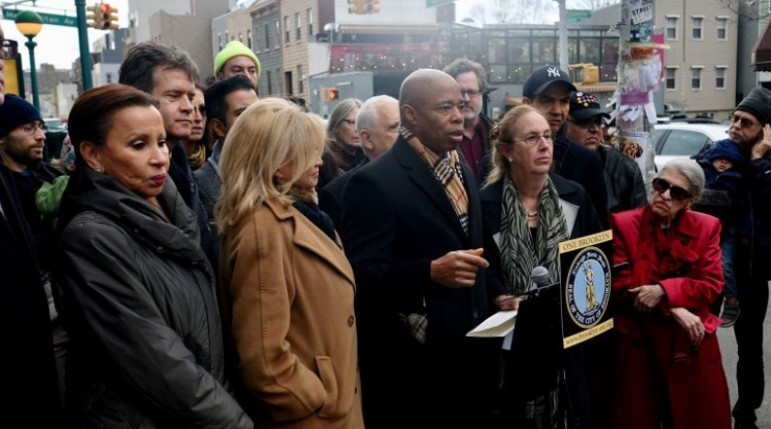On Sunday, January 6, 2019, elected officials and transit advocates gathered in Brooklyn demanding answers to the new plans for the L Train Shutdown. NYCTRC Chair and MTA Board member Andrew Albert mentioned,” I’ve spoken to a few of my colleagues and everyone has questions,” Albert said. “Tough questions are going to be asked for sure.” We need to have a better understanding of the options NYC Transit looked at in 2016. Were any of these options similar to the ones now being proposed? And if yes, why were they rejected? We need to know these answers and the many listed below before we can call into question NYC Transit’s credibility. You can’t fix an engineering problem with a political solution!!
Chair Albert expresses many concerns that have not been answered:
- Where have these experts been over the last three years?
- What was the scope of work that the academic experts analyzed? What was their access to and involvement with NYC Transit staff and with whom did they interact?
- How long is this fix good for? Or are we going to have to go through this again in fifteen years?
- Will this require a new NEPA and/or public involvement process?
- When will the four identified public outreach sessions be held and where?
- How does this impact the Capital Program?
- Will federal funds need to be repaid, and who is responsible for the repayment?
- If a $477 million construction contract can be done away with in just a few months, will any contractors want to do business with the MTA?
- Since this has never been done in the US before, who will do the design work? Will it have to go back out for bid?
- Since the technology likely doesn’t exist in the US, is it “Buy America” compliant per state and federal requirements?
- Will the exposed cables in the tunnels be more vulnerable? Is there even room to do the “racking” (cables mounted to the tunnel walls) in this tunnel?
- With twenty minute headways, what will be done to address the extreme crowding that will happen?
- How will the riding public and the workers be protected from silica dust that will undoubtedly be raised by movement of trains through the tunnels?
- Where will the work trains that will hold and remove the construction debris be stored and unloaded? Will they go through active stations and/or communities?
- What happens if this can’t actually be accomplished? Then what?
